OP-ED
German elections 2021: ‘Robot’ coalition on the cards while disturbing far-right extremist threat coalesces
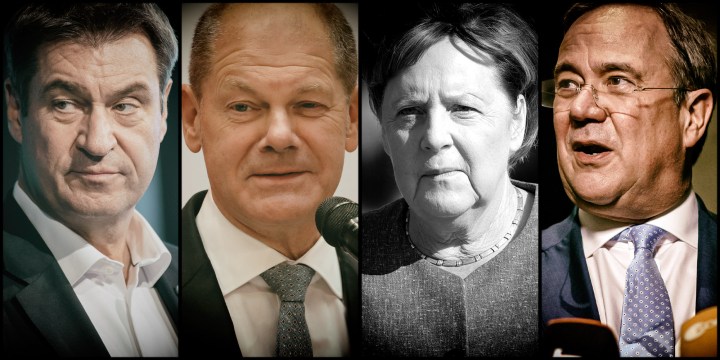
The most likely outcome of the coalition talks under way in Germany is a Red, Yellow and Green coalition — the traffic light or, in South African terms, a robot coalition. What may turn out to be a far more difficult task is to drain the right-wing swamp that is starting to spread throughout the eastern parts of the country with some pockets of support in the former West Germany.
Thomas Koelble is Professor of Business Administration in Political Science at the Graduate School of Business, University of Cape Town.
The German elections of 26 September 2021 brought unexpected results. The Social Democratic Party (SPD) led by Olaf Scholz was able to gain roughly a quarter of the national vote with 25.7% (up from 24.6% in 2017) and thereby became the largest party. It will occupy about 206 seats in the new Bundestag.
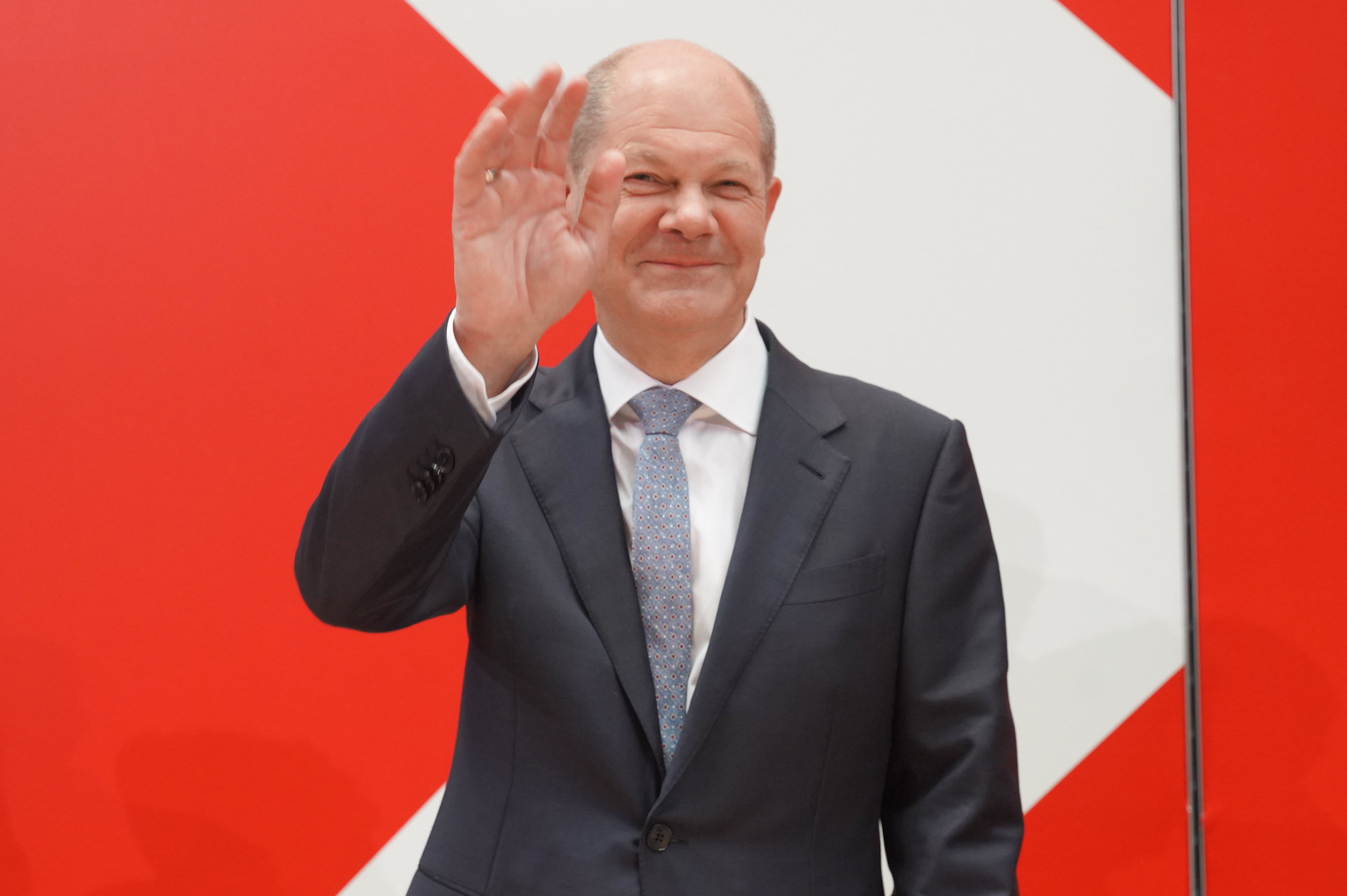
Leader of the Social Democratic Party (SPD) Olaf Scholz at a press conference in Berlin, 27 September 2021 after the German general elections. (Photo: EPA-EFE / Joerg Carstensen / Pool)
The party did a great deal better than one might have expected a few months ago when it languished at about 14% of support in opinion polls. Its traditional working-class base has all but eroded and even its backing in the trade union movement has largely dissipated. In the post-war period, the party consistently won more than 30% of the vote, but declined sharply after 2009. Contrary to all expectations, the party rebounded sufficiently to now be first in line to lead a new government.
The Christian Democratic Union (CDU) and its Bavarian sister party, the Christian Social Union (CSU), crashed from 30.2% in 2017 to 24.1%. This is the worst election result for the two parties in the entire post-war period. Much of this decline is being credited to its hapless leader, Armin Laschet, who conducted a spectacularly unsuccessful electoral campaign and finds himself in the crosshairs of his internal critics. He also seemed to be the only person to deny that his party had lost the elections, pointedly refusing to congratulate Scholz — a matter of protocol, yet also a serious matter of democratic etiquette.
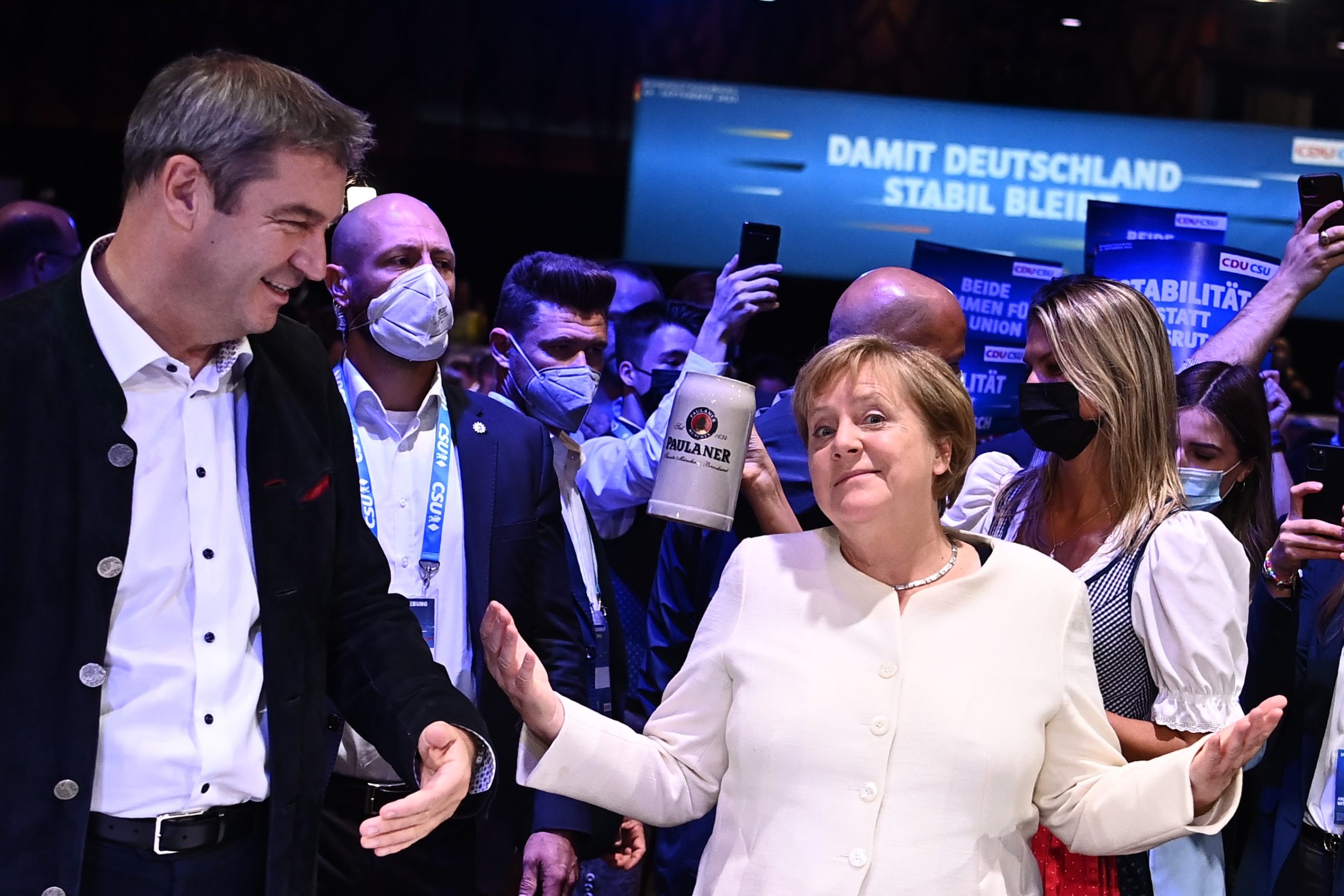
Christian Social Union (CSU) chairman Markus Soeder (left) and outgoing German Chancellor Angela Merkel (right) arrive at the closing of the CSU election campaign in Munich, 24 September 2021. (Photo: EPA-EFE / Lukas Barth-Tuttas / Pool)
However, Laschet may, at least partially, be the unfortunate fall guy for the flagging support for Angela Merkel and her government. In her last few months in power Merkel’s popularity waned as a result of the Covid crisis and possibly sheer exhaustion by her 16-year reign. The CDU/CSU will have 196 seats in the new Bundestag. Even the popular leader of the CSU, Markus Soeder, was unable to avoid a similar trouncing of his party in Bavaria, where the CSU sank to its lowest post-war electoral point at 31.2%. The “people’s parties” of yesteryear are no longer that — they are now in a dogfight for votes with the smaller parties, which may make coalition governments not only less predictable but possibly also short-lived.
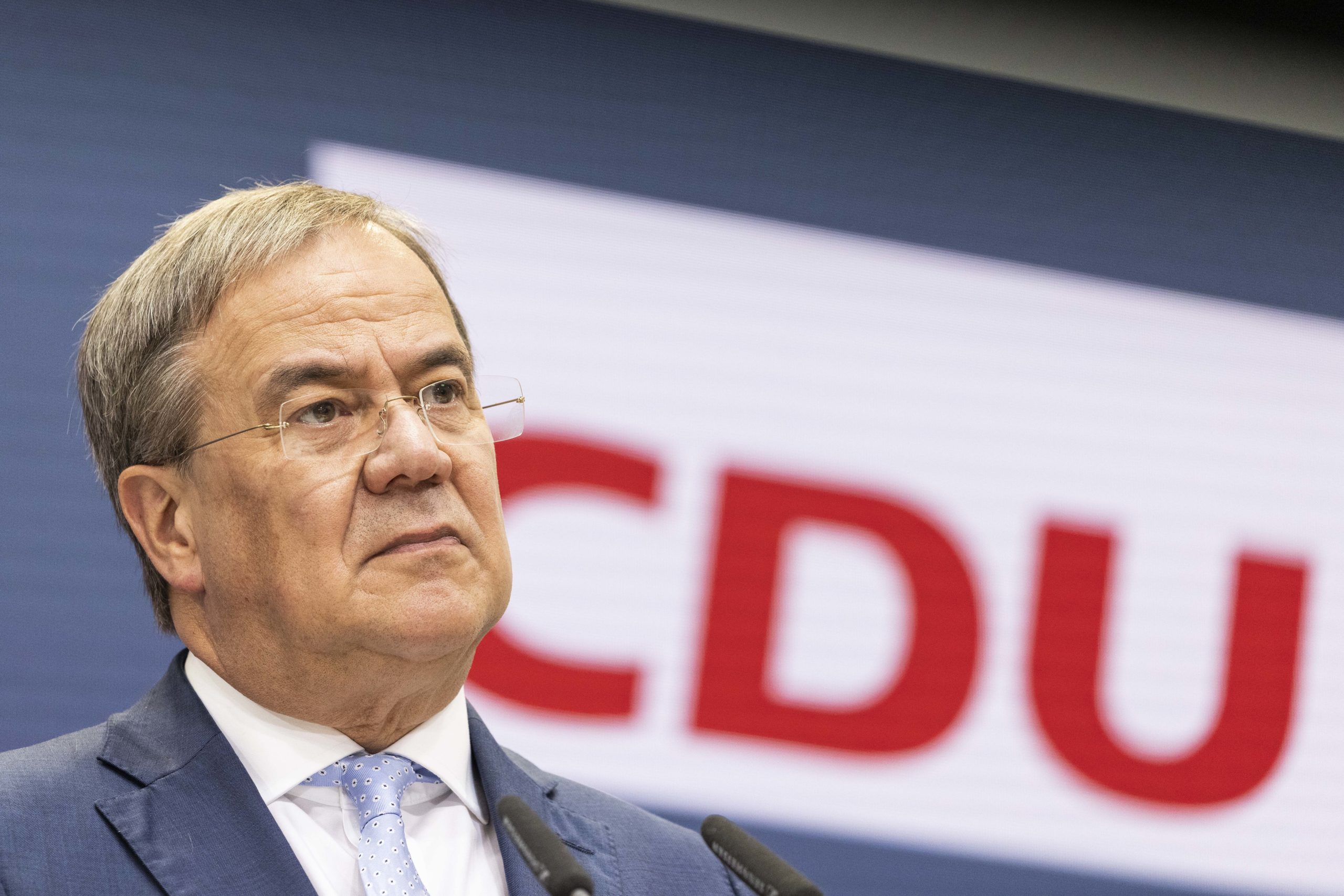
Armin Laschet, chancellor candidate of the Christian Democrats (CDU / CSU) union, at a press conference at CDU headquarters in Berlin, Germany, 27 September 2021, the day after federal elections. (Photo: EPA-EFE /Maja Hitij / Pool)
The Green Party improved its electoral showing from 8.0% in 2017 to 14.8%. At one point, however, the party was leading the opinion polls with more than 26% of the vote and its electoral showing is therefore a disappointment given that it looked set to become Germany’s leading party.
Led by Annalena Baerbock and Robert Habeck, the Greens are hitting all the right notes when it comes to German voters’ concerns about the environment/climate change issues (heightened by the flooding of large parts of western Germany during the election campaign) and the process by which a highly industrialised economy will make the transition into an ecologically sound future. The Greens developed from a protest movement party in the 1980s to a serious contender for political office. The Greens will hold 118 seats in the new Bundestag.
The Free Democratic Party (FDP) improved its standing from 7.0% in 2017 to 11.5% and this updraft has given its leader, Christian Lindner, the opportunity to see himself and his party as the “kingmaker” in this round of coalition negotiations. The FDP likes to portray itself as a “financially responsible” party — which means restrictive tax regimes and state expenditures — and will hold 92 seats.
The left-wing Die Linke failed to get over the 5% hurdle in the Bundestag with 4.9% of the vote but, because the German electoral system contains both proportional representation and direct mandates, nevertheless managed to defend three direct seats and is therefore entitled to send 39 parliamentarians from its party list to Berlin.
Last, the right-wing Alternative für Deutschland (AfD) received 10.3% of the vote as opposed to 11.5 in 2017. It will be sending 83 of its hooligans to Berlin. There is an agreement among the other political parties that they will not form a governing coalition with the AfD as it is considered a right-wing extremist political formation and viewed by some as a threat to the democratic order.
Now to the issue of forming a coalition government: for ease of reference, each political party is associated with a colour (SPD is red; CDU/CSU is black; FDP is yellow; Die Linke also red; Greens are green; and the AfD is light blue). Given that it is the largest party in the Bundestag, the SPD claimed victory and is not prepared to form a coalition with the CDU, which eliminates all Red/Black coalition plans (the “Germany” coalition of Black, Red and Yellow; the “Kenya” coalition of Black, Red and Green).
While at first glance, such a coalition would be the most likely since the two parties combined would control a majority of seats in the Bundestag and would not need support from the smaller parties, there are very good reasons such a coalition is not in the interest of either party. The SPD has paid a high price for supporting various conservative governments in the recent past (2005 to 2009 and again from 2013 to 2017). The compromises the party made as a consequence of becoming part of the governing coalition have alienated large parts of its core constituency and are responsible for the loss of electoral support.
Similarly, the current weakness of the CDU/CSU may also be related to its coalition behaviour with its traditional leftist and environmentalist foes. In other words, the more these formerly large parties are forced into coalition horse-trading, the more likely they are to lose voting support.
The Greens are also not likely to form a Green/Black coalition as they currently view the CDU/CSU as beholden to its industrial (and polluting) interest groups, putting an end to any speculations about a “Jamaica” (Green/Black/Yellow) coalition. The Greens also have to worry about giving up their policy positions in favour of government posts as their constituencies are likely to attach great importance to green policy implementation.
The FDP is not averse to a coalition with CDU/CSU as it shares a common understanding of several economic and social policies. But given that there are no other potential coalition partners — unless they engage in an alliance with the AfD, which is a no-go area for all of the political parties given Germany’s history — a simple CDU/CSU/FDP coalition would not be able to command a Bundestag majority and could only rule as a minority government if the other parties cannot come to some coalition agreement.
The most likely outcome of the coalition talks under way is a Red, Yellow and Green coalition — the traffic light or, in South African terms, a robot coalition. It looks likely that Scholz will be the next German chancellor in a coalition with the FDP and the Green Party. The FDP is keen to control the finance ministry — to control spending and Lindner as the finance minister — whereas the Greens are keen on several ministries that relate to environmental policy. The SPD and Greens share several policy platforms and views — the same cannot be said for the FDP. It is likely to function as a brake to the more liberal spending policies of its coalition partners. Given the difficulties of coalition negotiations, the process of bargaining may take some time and is by no means assured.
The aftermath of this election has, understandably, been a media concentration on the complicated and convoluted business of coalition building and government formation. The efforts to build a governing coalition have overshadowed two highly disturbing electoral trends — the number of non-voters increased to almost a quarter of the voting population and the solidification of the AfD in the southeastern parts of Germany.
Particularly the first trend is worrisome because voting is seen as an important act of civic duty. And the fact that the AfD is the party most likely to recover those who stopped voting in the economically and structurally weaker regions of the country makes this a dangerous situation. A classic populist party, it blames the elites for Germany’s economic problems (particularly the state of the former East German region), and immigrants/asylum seekers for undermining what is viewed as “German”. The argument is often made that immigrants are treated better by the German authorities than citizens.
Despite the fact that the right-wing AfD got less of the vote than it did in the 2017 elections, it solidified its electoral grip in the former East German provinces of Thuringia and Saxony. The party now has the support of close to a quarter of the former East German population, which should give rise to some alarm. It is well entrenched in the legislatures of all of the former East Germany.
Feelings of alienation from the German state are commonplace in many formerly East German communities and there is a sentiment that East Germans have not been integrated into West German society and its economy. This has led to expressions of xenophobia and ultranationalism and is currently playing out in a divisive battle within the AfD over its direction between a more centrist, anti-EU, anti-Euro (a German version of the Brexit movement) grouping and what can only be described as a neo-fascist wing.
And, it would appear from reports in the German press, the latter are winning the struggle over control of the party, which will be reflected in the Bundestag delegation. It already includes individuals who use “Heil Hitler” to greet each other.
It remains to be seen whether Scholz can bring together a workable governing coalition. The constellation for him is favourable, especially if he can solidify the relationship with the Green Party and keep his more conservative FDP allies content. The transition to a greener economy is in full swing, though many parts of industry will have to be convinced that they need to get on board more fully.
What may turn out to be a far more difficult task is to drain the right-wing swamp that is starting to spread throughout the eastern parts of the country with some pockets of support in the former West Germany. The only route open to doing so is to be far more active in terms of state intervention, a position that is not likely to be supported by the FDP.
Unemployment and a resulting precariousness in weak economic zones lie at the core of the AfD story and can only be addressed with a concerted social and economic strategy that favours investment in the poorer and structurally weaker regions of the country. DM








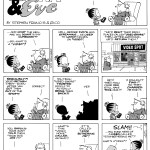










 Become an Insider
Become an Insider
Comments - Please login in order to comment.